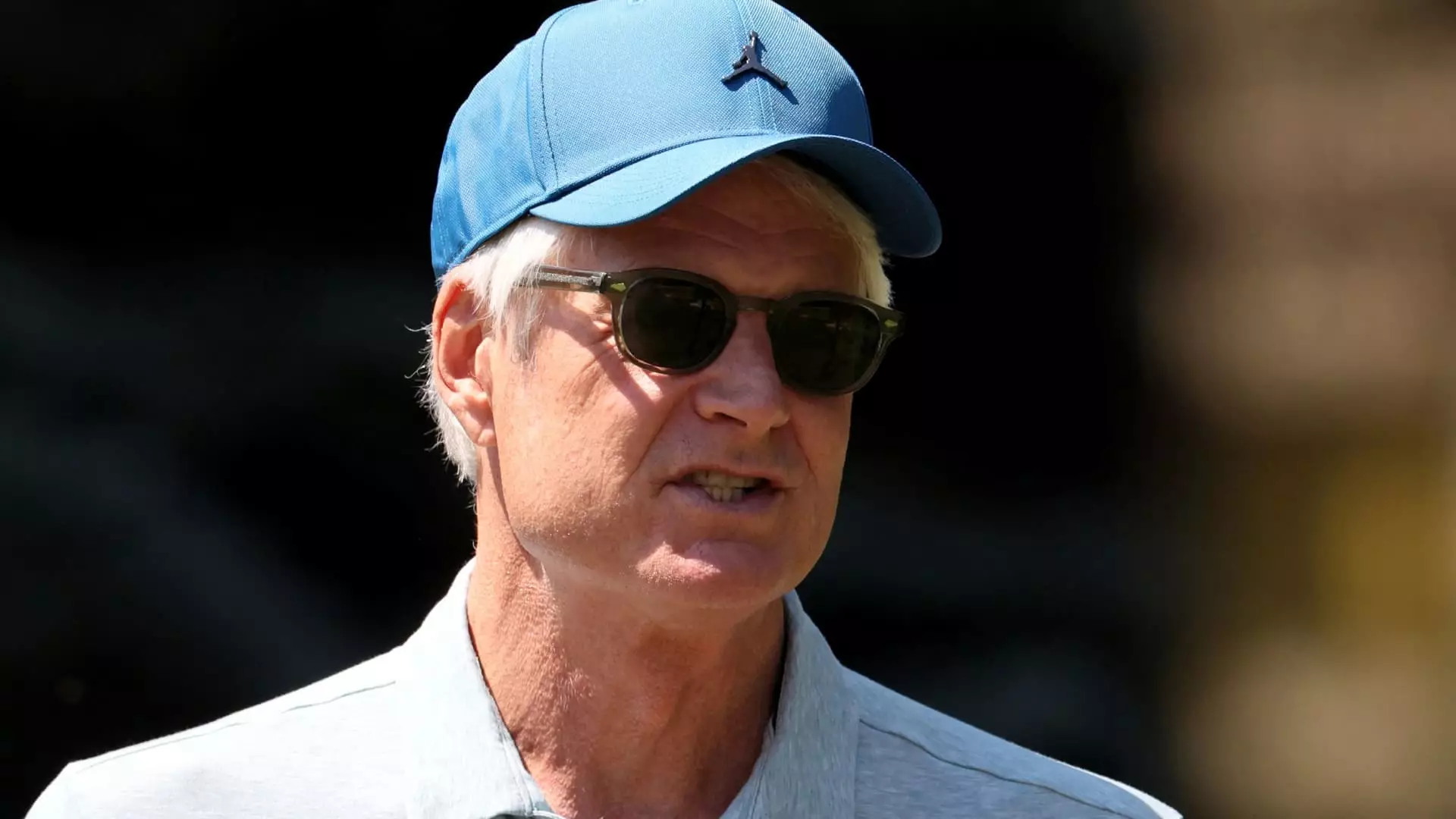The recent announcement regarding Nike’s leadership change has sent ripples through the athletic apparel sector, indicating a pivotal moment for the brand. CEO John Donahoe’s impending retirement on October 13, 2023, marks the end of a challenging chapter for Nike and ushers in Elliott Hill, a seasoned company veteran, who is re-entering the fray after his 2020 retirement. This significant transition comes during a tumultuous time for the company when it has struggled to maintain its market position in an increasingly competitive landscape.
The Context of Change: Donahoe’s Departure and Hill’s Return
In his nearly four-year tenure, Donahoe attempted to recalibrate Nike’s business model by strengthening its direct-to-consumer strategy. Under his guidance, annual sales grew from $39.1 billion in fiscal 2019 to approximately $51.4 billion in fiscal 2024, highlighting his initial success in adapting the brand to a digital-first environment. However, the strategic pivot faced criticism, especially as Nike ran into sales challenges and a significant drop in stock value—over 25% this year alone.
In this context, Hill’s return is perceived as a strategic maneuver to reinvigorate the brand’s innovative spirit and restore employee morale. Mark Parker, Nike’s executive chairman, emphasized Hill’s profound industry insights, leadership qualities, and passion for sports as aligning well with the company’s needs for future growth. Their decision reflects not only a desire for a return to traditional retail acumen but also a renewed focus on fostering creativity and innovation—attributes that have defined Nike’s legacy.
Revisiting Core Values: The Importance of Innovation at Nike
Nike has historically set itself apart through its commitment to innovation. The brand built its reputation on releasing cutting-edge products that push the boundaries of athletic performance and style. However, as sales strategies evolved to prioritize direct-to-consumer channels, critics argue that this shift may have inadvertently hampered the company’s innovative output. Reports suggest that while Nike was busy fortifying its online presence, it lost sight of pioneering advancements in sneaker technology and design that once captivated consumers.
Elliott Hill’s reputation as a hands-on leader who rose from an intern to the president of Nike’s consumer and marketplace division brings hope that Nike will revitalize its commitment to revolutionary products. Hill himself acknowledges that Nike has always been an integral part of his identity and seems poised to reintegrate those core values into the company ethos, working collaboratively with both seasoned and new employees to generate novel ideas.
Responding to Market Challenges: Strategic Adaptation in a Competitive Environment
Nike’s recent struggles are starkly evident in its fiscal reporting, where a 10% projected drop in sales was linked directly to shifting consumer trends, notably in key markets like China. The anticipated downturn starkly contrasts Wall Street’s expectations, raising questions about the efficacy of the strategies implemented under Donahoe’s supervision. Furthermore, Nike’s attempt to cut ties with wholesale partners in favor of a direct-to-consumer model inadvertently opened doors for emerging competitors like On Running and Hoka.
Hill’s immediate challenge will be to recalibrate this strategy while regaining the trust of wholesale partners without sacrificing the direct engagement with consumers. His experience and deep comprehension of Nike’s operational intricacies will be crucial for navigating these complexities. Nike must not only recover lost market share but also redefine its competitive edge in a landscape where rivals are quickly gaining traction.
One of the pressing issues Hill will face is rebuilding company morale, which has reportedly declined during Donahoe’s leadership. Jessica Ramirez, a senior research analyst, pointed out that restoring the company culture is essential for long-term success. An engaged and motivated workforce is fundamental to innovation and loyalty; thus, reconnecting with employees at every level will be critical.
Hill’s personable approach and previous rapport with staff suggest he may be the ideal candidate to mend these relationships. By fostering an inclusive work environment where ideas can thrive, he aims to reinvigorate the workforce, ensuring that Nike not only remains competitive but also a revered place to work.
As Nike gears up for this leadership transition, the path forward is undeniably fraught with challenges—from maximizing innovation to restoring employee morale while navigating market pressures. Nonetheless, Hill’s extensive experience and dedication to the brand can serve as a cornerstone for a renewed commitment to its guiding principles.
The changes in leadership at Nike signify more than just a shift in titles; they herald an opportunity to revive a storied brand with a reputation for innovation and commitment to its consumers. The eyes of investors, consumers, and competitors alike will be on Hill as he takes on the mantle of leadership, and as the dust settles, the effectiveness of this transition will ultimately be measured in the actions taken and the products delivered. Nike’s future hangs in the balance, and the world awaits the next chapter in its storied history.

